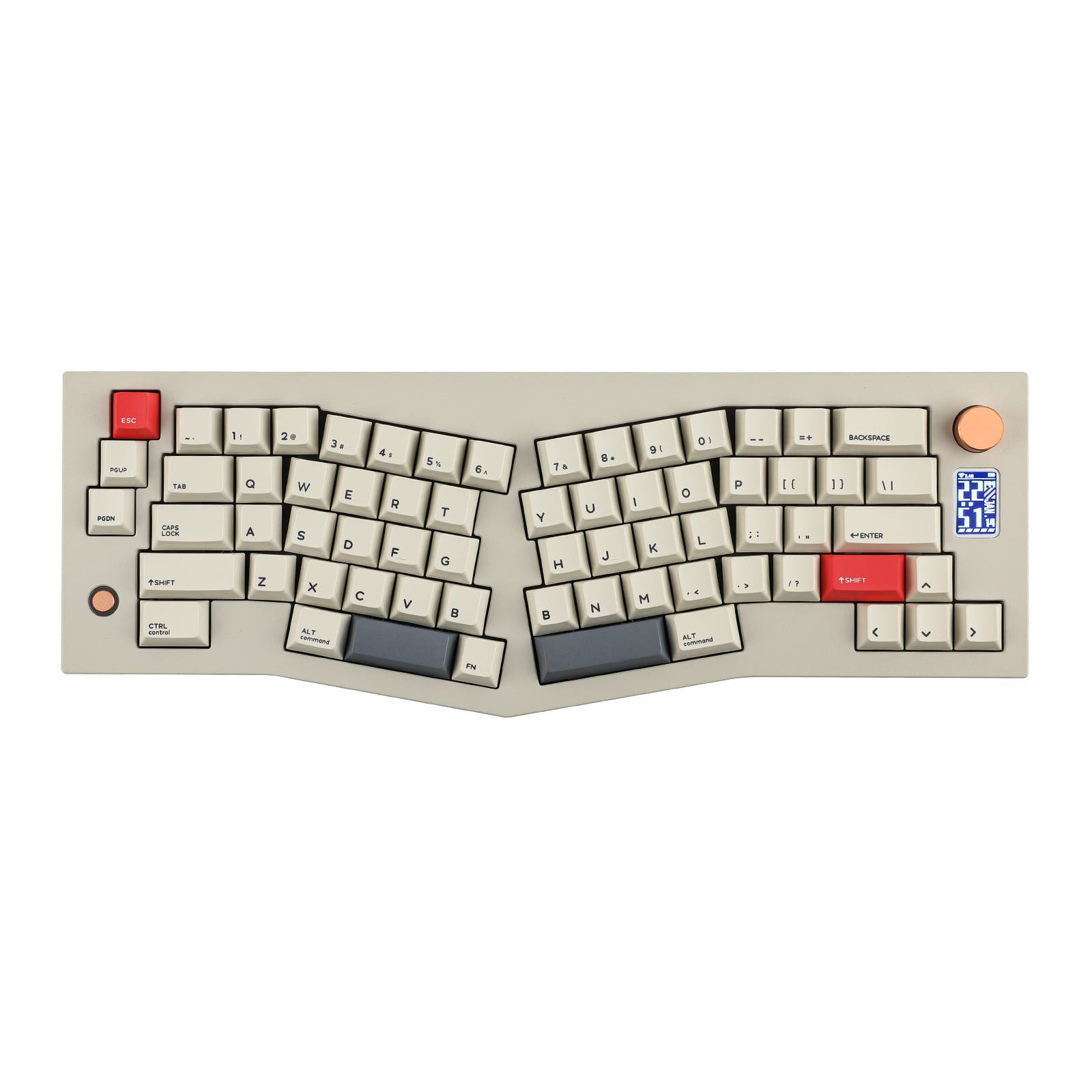Ergonomic Mechanical Keyboards for Optimal Typing Comfort
Discover our curated collection of ergonomic mechanical keyboards, engineered to provide exceptional comfort and support during extended typing sessions. These keyboards feature advanced ergonomic designs such as split layouts, tenting capabilities, and contoured keycaps to promote natural hand and wrist posture. By choosing an ergonomic mechanical keyboard, you can significantly reduce strain, prevent repetitive stress injuries, and enhance your overall typing productivity. Explore various switch types, sizes, and customization options to find the perfect ergonomic custom keyboard tailored to your specific needs and preferences. Upgrade your workspace with a keyboard that prioritizes both health and performance.
Found 135 products
Understanding Ergonomic Mechanical Keyboards
Are you experiencing discomfort during long typing sessions? An ergonomic mechanical keyboard might be the solution. This guide answers common questions about ergonomic designs, helping you choose a keyboard that enhances comfort, improves posture, and boosts typing efficiency. Discover how features like split layouts and customizable angles can transform your interaction with your custom keyboard.
What makes a mechanical keyboard 'ergonomic'?
An ergonomic mechanical keyboard is designed to minimize physical stress and maximize comfort. Key features include split designs (separating the keyboard into two halves), tenting (angling the halves upwards), negative tilt (angling the front of the keyboard down), and ortholinear or columnar staggered layouts that align with natural finger movement. These elements help maintain neutral wrist and forearm posture, reducing strain.
Who benefits most from an ergonomic mechanical keyboard?
Anyone who spends significant time typing can benefit, including programmers, writers, office workers, and gamers. Individuals experiencing wrist pain, carpal tunnel syndrome, or other repetitive strain injuries (RSIs) often find substantial relief. Investing in an ergonomic custom keyboard is a proactive step towards better long-term musculoskeletal health.
What are the key differences between various ergonomic layouts?
Common ergonomic layouts include fixed split (e.g., Alice layout), fully split (two separate pieces), and unibody contoured designs (e.g., Kinesis Advantage). Fixed splits offer a more traditional feel with an ergonomic angle, while fully split keyboards provide maximum adjustability for shoulder width and arm position. Contoured keyboards often feature keywells to reduce finger travel.
Can I still get the mechanical feel I love with an ergonomic design?
Absolutely. Ergonomic mechanical keyboards utilize the same variety of mechanical switches (e.g., Cherry MX, Gateron, Kailh) as standard keyboards. You can choose switches based on your preferred tactility, actuation force, and sound profile. Many ergonomic models also support hot-swappable switches, allowing for easy customization.
How do I choose the right ergonomic mechanical keyboard for me?
Consider your specific needs: Do you need extreme adjustability (fully split)? Is portability a factor? What is your budget? Evaluate features like programmability (QMK/VIA support), build quality, and connectivity options (wired, wireless). Reading reviews and, if possible, trying different models can help you find the ideal ergonomic mechanical keyboard.
Are ergonomic custom keyboards difficult to adapt to?
There can be an adjustment period, especially if moving from a traditional layout to a significantly different one like a split or ortholinear keyboard. However, most users adapt within a few days to a couple of weeks. The long-term benefits in comfort and reduced strain often outweigh the initial learning curve for these specialized mechanical keyboards.
Shop smarter with KeebFinder's advanced tools
Comprehensive filters
Quickly narrow down your search using filters for price, features, layout, switch type, connectivity, and more. This makes it easy to find the perfect ergonomic keyboard that matches your specific needs and preferences.
Realtime availability and price history
See up-to-date stock information and track price changes over time. KeebFinder's price history tool helps you spot the best deals and make informed purchasing decisions.
Compare brands and vendors
Easily compare products from different brands and vendors in one place. This feature saves you time and ensures you get the best value for your investment.

![KBDFans Agar Mini - 40% MX and EC Keyboard Kit [Preorder] - Image: 1](https://cdn.shopify.com/s/files/1/0755/7103/6493/files/kbdfans-agar-mini-40-mx-and-ec-keyboard-kit-preorder-8561493.webp?v=1754282187&width=3840&quality=75)




![QK Alice Duo - Ergonomic Alice Layout Mechanical Aluminium Custom Keyboard Kit [Preorder] - Image: 1](https://cdn.shopify.com/s/files/1/0755/7103/6493/files/qk-alice-duo-ergonomic-alice-layout-mechanical-aluminium-custom-keyboard-kit-preorder-388919.webp?v=1743974131&width=3840&quality=75)

![[In Stock] @40 40% Low Profile Keyboard Kit by Niuniu - Image: 1](https://cdn.shopify.com/s/files/1/1674/0405/files/37c0f8eaab15bf2b01d56bf7f56ee30.jpg?v=1749523764&width=3840&quality=75)













